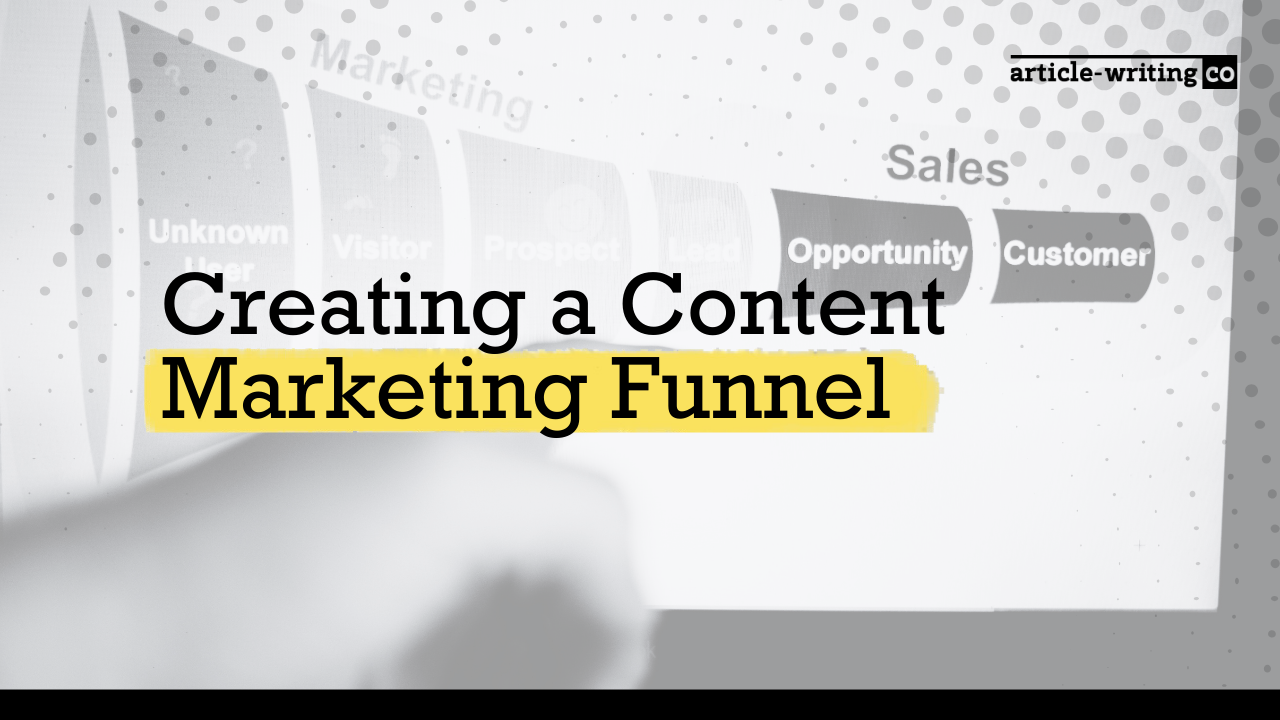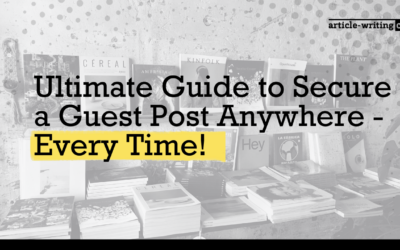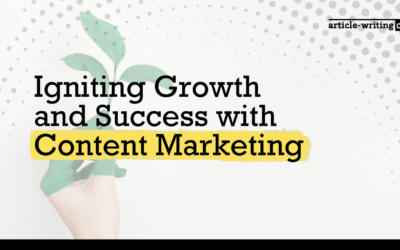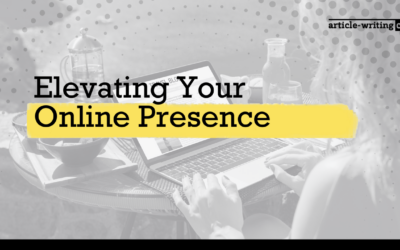
While it’s wonderful to hope that every person that interacts with your brand will become a paying customer, that’s far from reality. Your best bet for increasing conversions and creating raving fans? Creating buyer’s journey content for each stage of the content marketing funnel is crucial to maximizing sales potential.
Think of your business as being just one stall in an outdoor marketplace full of competitors. While it’s nice to think that every person that stops by your booth will become a paying customer, the reality is that you will only secure a portion of this traffic.
Your potential pool of customers will grow smaller as they make their way towards completing their first transaction with your business. This is what marketers refer to as a customer funnel.
Creating Content for Each Stage of the Buyer’s Journey: Defining the Customer Funnel
When creating a content marketing funnel for each stage of the buyer’s journey, you can break it down into four stages:
- Awareness: At the top of the funnel is the awareness stage. This is where consumers initially seek out your brand during the search for a solution to their problem.
- Evaluation: Next comes the evaluation stage. Now that they have a top-line understanding of your company, consumers will start performing research to determine whether or not your services or product is a good fit for them.
- Conversion: Consumers that are ready to make the plunge will continue on to the conversion stage. This is when the consumer becomes the customer.
- Retention: The journey doesn’t end after the transaction is complete. The retention stage is crucial for establishing a lasting relationship with a customer.
The content you use at each stage plays an important role in urging consumers on to the next stage and widening your funnel. By creating content for each stage of the buyer’s journey that is engaging, informative and actionable, your business will enjoy higher conversion rates and faster results.

The Importance of Solid Content
It’s no secret that content is king. Brands need a multifaceted content marketing strategy in order to reach customers and provide quality content for each stage of the buyer’s journey.
Social media posts, email newsletters and testimonials are all separate, yet effective ways to communicate your brand message and help consumers understand how your brand can help solve their problems. Your most effective strategy will depend on where your customer is on their decision-making process — also known as the marketing/customer funnel.
To further users along the sales funnel, all content should include a call-to-action at the end. Encourage them to visit your website, send a request for more information, or encourage them to sign up for your email newsletter. Whatever your request, don’t be afraid to just ask.
Here’s how to create content for each stage of the buyer’s journey.
Awareness
This is your first opportunity to make a good impression, and is where creative and strategic content marketing is the most crucial. While there are several different types of content that your brand can take advantage of, there are certain mediums that are more effective than others when it comes to building awareness around your brand.
Infographics
Sixty-five percent of your audience are visual learners. An infographic can take even the dullest subject matter and turn it into a captivating piece of content that is easy to digest. They create a visual representation of your data using a combination of graphics, statistics, charts, snippets and similar.
As a result, infographics are easy to skim and speed up comprehension of a topic. They’re also the most shared type of content, and are a great way to spread your messaging across multiple consumer channels.
Since they are visually engaging and easy to share, infographics are particularly popular on social media channels like Pinterest and Facebook. Upload it to your company’s page, and schedule it to be sent in an upcoming newsletter.
Videos
Videos are a dynamic and engaging way to reach your audience, and spread brand awareness. They resonate well with those that would prefer watching a video over reading a blog post. In fact, including a video on your website’s landing page can increase conversion by 80%.
Some creative ways to incorporate video in your content creation strategy include:
- Filming a demo of how to use your products or services
- Showcasing your company culture and offering a behind-the-scenes look at operations
- Explaining your creation process along with a tour of your location
- Interviewing fellow team members to great an “About Us” section
- Recording happy customers talking about their positive experiences working with your brand
The most effective videos are no longer than three minutes, so keep your message brief to encourage viewers to watch until the end.
85% of Facebook videos are watched without sound. To make your videos more shareable on Facebook, add captions and make it easily understandable without audio.
Pictures
One of the easiest ways to turn off a potential customer? Publishing blocks of tedious content without any engaging photos to break it up.
If you can build it into your project, it’s smart to skip the stock images and have custom photography to pull from for your content. At the minimum, have professional images taken of your product or services. This will make visitors more likely to share your photos on their own pages.
Best Practices:
- To increase the likelihood of having images shared, include at least one in every post.
- Use multiple images if possible – this can increase clicks by 1290% on Facebook.
- Optimize your photos for the web by reducing your file size as much as possible without sacrificing image quality. Programs like Adobe Photoshop, along with websites like Compress JPEG, are great ways to compress your image while keeping clarity sharp.
- Don’t underestimate the power of colors when it comes to marketing. Color psychology shows that blue and green are the highest performing colors, followed by red and orange.
Webinar
Offering a webinar is like hosting a special class or seminar for your audience. They are a great way to showcase your expertise and provide a valuable resource for consumers.
If you’re a business consultant, consider hosting a webinar that shares the ten most important things every startup must do in order to succeed. Prepare a presentation deck that participants can follow along with, and keep talking points handy to keep yourself on track.
You would select a specific day and time for the webinar to take place, then promote the event through all communication channels (i.e., social media, website, email newsletter) to encourage RSVPs.
E-books
If you have a lot of valuable long-form written content, consider combining it into an e-book. This is a great way to repurpose your existing content while offering consumers a helpful resource.
Pick a valuable topic that your audience is inquiring about. Use a keyword search tool like Ahrefs to determine what your would-be customers are searching for. Online messaging forums like Reddit are also excellent resources for learning what questions your audience wants answered.
An e-book might seem like a daunting task at first – indeed, they are more time- consuming than other forms of content. If it’s in your budget, consider outsourcing the project to a freelancer so you can free up your time to focus on other aspects of your business.
Email Newsletters
If your company doesn’t have an email newsletter, you’re behind the curve – they’re part of the content marketing strategy of 83% B2B marketers.
Whether sent weekly or monthly, email campaigns are an excellent opportunity to continue regular communications with your audience and keep your brand top-of-mind.
Newsletters should provide informative content that could focus on either one central theme or several different topics. Unsure of what to include in your newsletter? Some idea to consider:
- How-to articles or tutorials readers would find useful
- Special offers, exclusive discounts, upcoming sales and freebies like whitepapers or webinars
- Updates about company news and industry happenings
A clever way to increase the likelihood that your emails are actually read? Include videos within the content. Even simply using the word “video” in your subject line boosts open rates by 19%.
Social Posts
Did you know that 96% of the people who talk about your brand online don’t follow it on social media?
If your brand isn’t already on social media, you should be. Consumers are 71% more likely to make a purchase after reading referrals on social media. 78% of consumers also report than a company’s social media posts have a major impact on their purchasing decisions.
Social media presents a crucial opportunity to engage with your audience and define your company’s brand. Use your platform as a way to position yourself as an industry leader and indispensable resource.
This includes posting about industry news, providing expert insight on hot topics, and answering customer inquiries. If you’re unsure about what content your users want the most, here are some tips to consider:
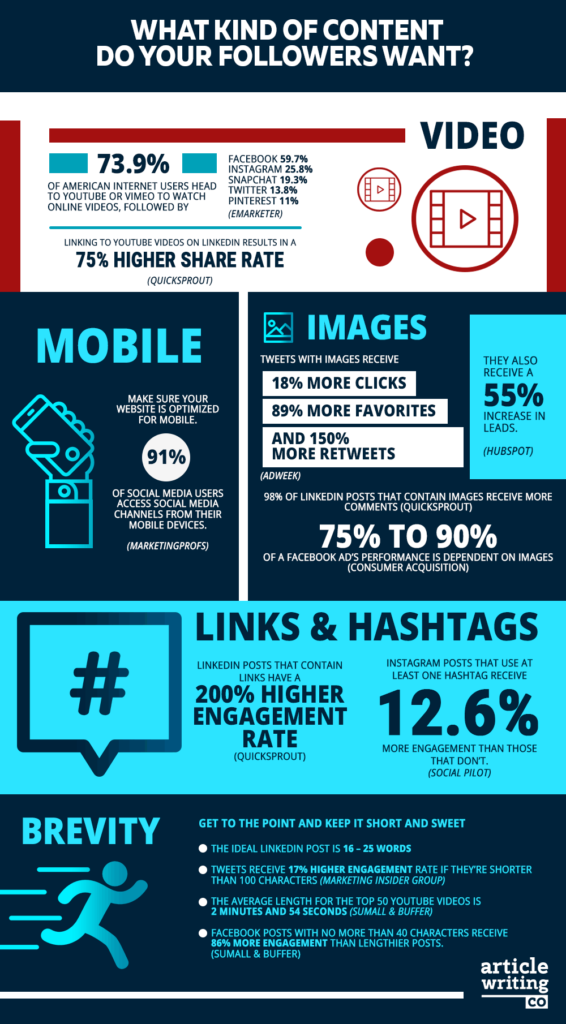

Evaluation
Great! You’ve managed to build some stellar content, and the consumer is now beginning to consider you for the solution or product that they’re after.
Your goal during the evaluation stage is direct customer acquisition. This is a research-intensive stage for many consumers. They will be reading customer reviews to gauge what others are saying about your company and form an opinion on your offerings.
Two effective ways to showcase your value are case studies and demo videos.
Case Studies
Does your company have a success story that you’re particularly proud of? Everyone loves a good story, and case studies are an effective storytelling method.
This method of content marketing starts with a problem, outlines the tactics your company took to solve that issue, and concludes with tangible results that showcase the effectiveness of your product or service.
For example, if you’re a real estate agent, you might create a case study about how you increased the final sale price of a fixer-upper or helped a client find their dream home for half the expected cost.
Most case studies are written. However, video is also an excellent method for sharing a success story. To get the most out of your content, be sure to:
- Upload it to your website under a separate “Case Studies” section
- Share it on social media to increase the likelihood of it being shared with others
- Use it as marketing collateral or when showcasing your value to a potential client or partner
Make sure to get your client’s permission before publishing a case study, and don’t be afraid to ask if they’re willing to contribute a quote!
Demo Videos
Sometimes, the best approach is to show, not sell. Customers need to see your product in use in order to understand the value that it will provide.
Demo videos are an excellent way to showcase your product and walk newcomers through how your product works. They provide a live demonstration that proves your product’s value and explains how it will help solve your buyer’s problem.
This form of content is also an effective way of explaining your product’s key features and benefits, as well as what makes it unique. This can be a crucial tool for your sales team, and provides them with an easy-to-share piece of content that can help seal the deal.
The key is to keep the product demo short and sweet and provide customers with the information they need to make a final purchasing decision. Explain the key features of your product and conclude with a call-to-action that will encourage the viewer to make a final purchase.
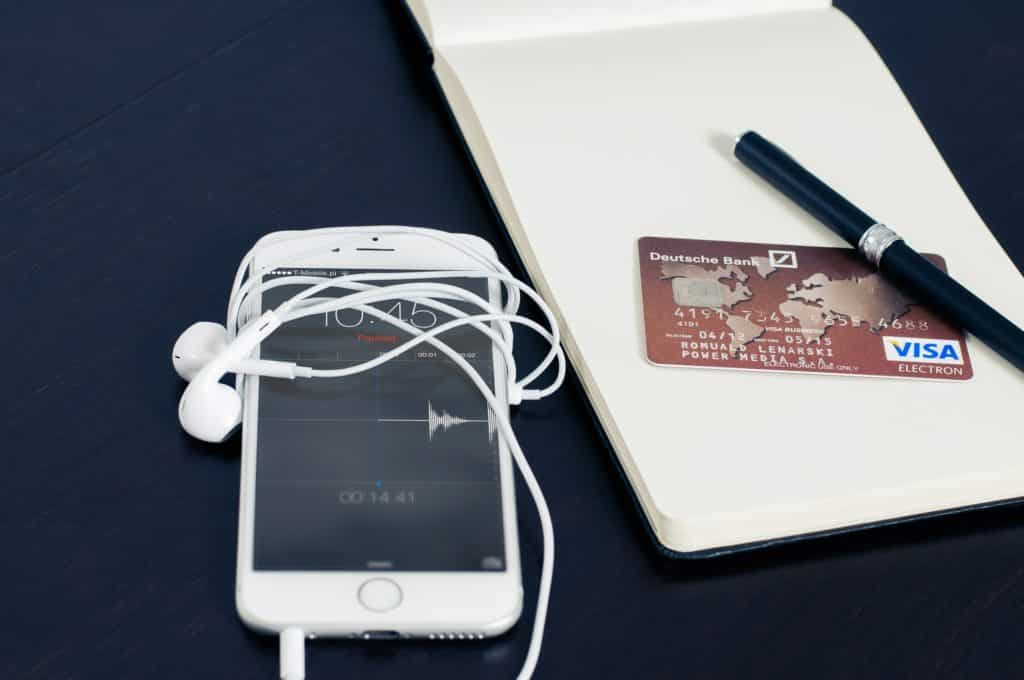
Conversion
At this point, your audience is determining what it will take in order to become a customer. You’ll need to showcase your know-how to convince consumers to pull the trigger and make a purchase.
Now that they know what you have to say about your brand, they’ll now be wondering what your actual customers have shared. Before making their final decision, your audience will now turn to the opinions of those who have already done business with you.
Take the time to gather testimonials and reviews from previous customers about your product or service. Making this information easily accessible to your audience will increase your transparency and give them more faith in your brand.
Testimonials
Never underestimate the power of a great testimonial when it comes to creating content for each stage of the buyer’s journey.
Customer testimonials create an emotional appeal for your brand and help communicate your message. Brands that are able to create an emotional connection receive three times as much word-of-mouth as those who don’t.
Testimonials don’t need to be long. Even a sentence or two about a positive experience will be enough to convey the value of your product.
How to ask for a testimonial from your customers? Here are three tips:
- Don’t waste time. If you’ve gone above-and-beyond for a customer, they’ll likely be satisfied enough to provide a positive testimonial. Ask for a quote immediately after the project is done, or once they have begun to receive results.
- Ask how you can make their experience better. Follow up with customers to ask if you were able to resolve their issue, and if there is any way you can improve their results. Then, send another follow-up two weeks later to ask if they’d be interested in submitting a review.
- Make it easy for your customer to leave a testimonial. Create a special section on your website that allows them to submit a testimonial. Ask guided questions, including what benefits they gained from your service and the results they have garnered.
Reviews
Studies have found that nearly 70% of online consumers will read at least one product review before making a purchasing decision.
The difference between a review and a testimonial? While brands have the ability to pick-and-choose testimonials that best showcase their business, reviews are unedited. While they can be published to your website, reviews are often posted on third-party websites like Yelp, Foursquare, Facebook and Google.
85% of consumers will read up to 10 before fully trusting a business. The best way to encourage a great quantity of reviews? Simply ask. Most customers will be willing to share a review of their experience if it isn’t a hassle:
- Post signage in your place of business requesting a review
- Send follow-up emails with links directing them to each website
- Share reviews on social media, along with a call-to-action for fans to post their own

Retention
Congratulations! You’ve secured your customer and gained their business. Now what?
The funnel doesn’t end once the transaction is complete. Repeat customers help promote your business, increase your profits, help with product expansion and enable you to better understand your target market.
However, with multiple brands competing for your customer’s attention, how can you remain top-of-mind without inundating them with messaging?
Insider How To’s
First, turn to the experts to learn about the best ways to turn one-time customers into brand ambassadors:
- Remember the Individual: According to Ben Motteram, principal of consulting firm CXpert, the best tactic is to aim for the heart. Appeal to your customer’s emotions is as simple as remembering what your customers order. Send them a suggestion that will further meet their needs or address an issue they never knew they had.
- Keep Your Word: The modern consumer has no issues seeing through inauthentic messaging. To preserve customer trust and retain a loyal audience, be as authentic as possible. Adam Ramshaw, director of the customer experience consultancy Genroe, says that companies need to do what they say they will do. This includes announced updates and updating problem areas.
- Make Everything Hassle-Free: Your customers should be performing as little effort as possible in order to interact with your brand, according to customer retention expert Adam Toporek. Speak with your staff and regular customers to identify pain points and determine how to elevate the customer experience. This can include improving your website, adjusting communications, or improving customer support documents.
Customer Support Documents
Make it easy for your customers to find the answers to the questions they have about your product or service. Offering customers access to a user guide, tutorial or help menu will help cement faith in your brand and present you as an indispensable resource.
Text, images and video all encompass the documentation that helps customers understand your product or service. Every manual or demonstration video that you offer customers will provide helpful answers and teach them how to use your product.
It allows customers to help themselves (thus reducing your support workload) and frees up your team to focus on building better products.
FAQ’s
It’s likely that your customers will often have similar questions when it comes to troubleshooting and using your product. To help anticipate their needs, create an FAQ section on your website that helps address their specific concerns and problem areas. Having an FAQ section available on your website will show customers that you understand what their concerns might be, and want to anticipate them ahead of time.
Email Outreach and Follow Up
Remember that section about email newsletters? Never underestimate the power of the follow-up. Keep in touch with your customers and let them know that they haven’t been forgotten now that you have their business.
Ask questions about the service they received, inquire about how you can make their experience better, and ask for feedback about how their product is performing. Personal messages are best. If possible, send a customized note that refers to your customer’s specific needs.
Make the Content Marketing Funnel Work For You
With so many brands vying for a consumer’s attention, your best offense is to have a solid offering of content. Custom-tailoring the content marketing funnel for each stage of the buyer’s journey will help educate your audience on the effectiveness of your product or service. This will help convert casual website visitors into longtime customers. You’re on your way to becoming a Thought Leader!

David is the Founder and Director of article-writing.co, the fastest-growing content creation agency in North America. He has transformed companies by offering high-quality content that has impacted their SEO ranking, revitalized websites with engaging and industry-relevant blogs and website copy, and championed successful email campaign copy.

